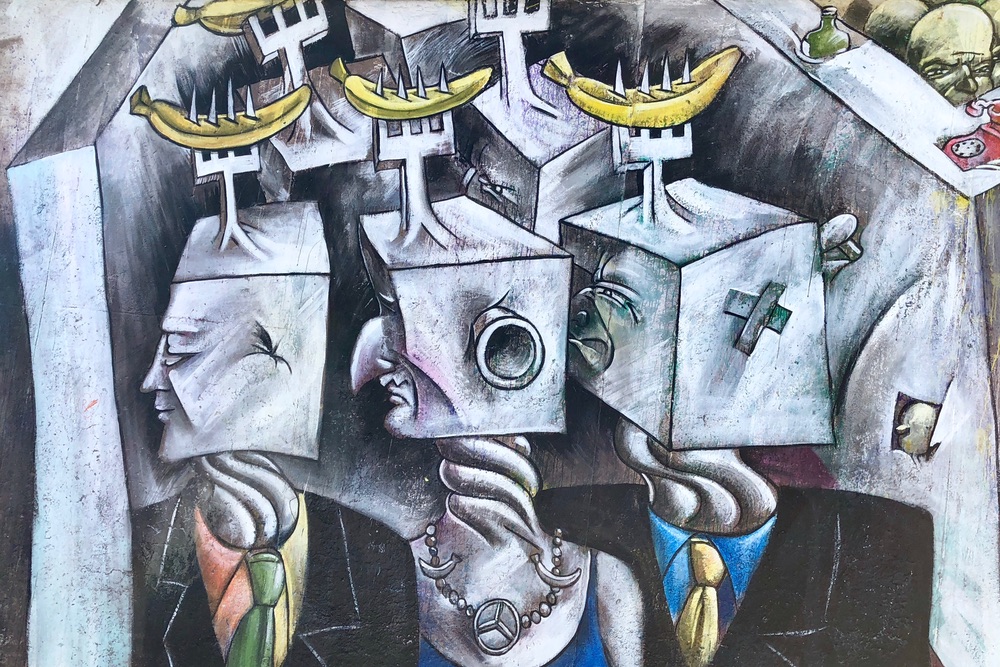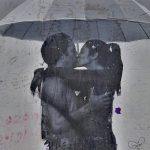
In recent decades, the cosmopolitan city of Berlin has become one of the world’s top locations for art and culture. Swinging London or the Big Apple were yesterday, today the metropolis of Berlin attracts artists.
Berlin’s commercial galleries show around 3,000 exhibitions every year, which Berlin’s gallery owners finance with free admission and no state aid.
Backpackers and private jet travellers, all kinds of art enthusiasts come to the city that never sleeps. A city without a curfew.
The East Side Gallery, which starts at The Wall Museum and leads from there towards Ostbahnhof, is the most famous open-air gallery in Berlin. Over 100 artists from all over the world have painted on Mühlenstraße.
The Gallery currently belongs to the Berlin Wall Foundation, whose mandate there includes the “Park an der Spree” and “East Side Park” plots. It is thus responsible for the structural maintenance of the East Side Gallery and the upkeep of the associated public green space.
The era of the actual wall art began in 1976, when the GDR border troops began to erect a new wall made of concrete segments on the “west side” of the border installations. These were around 3.60 m high and mostly painted white. But today’s East Side Gallery was never an object of wall art before the fall of the GDR regime. It was on the GDR side and formed the so-called Hinterland Wall, which was supposed to keep people on the GDR side from reaching the actual barrier walls.
Since the Wall was heavily guarded here, there was no possibility of painting here. Unlike on the west side, there was no possibility to retreat to safe territory.
The origin of the Gallery is completely different. GDR artists had not received any income from state commissions since October 1989. This gave rise to a movement that wanted to start new projects. In February 1990, after obtaining official permission from the then Ministry of National Defence, the “East Side Gallery” project was founded. Through embassies and diplomatic missions, artists from many parts of the world were invited to participate in the project. As it later turned out, the entire Berlin border installation was under the supervision of the LPG Leipzig, a front organisation of the GDR’s Ministry for State Security (MfS). The wimps exerted influence on the project. They wanted to at least hinder, if not control, another political art movement.
So the origins of the East Side Gallery are completely different from what most visitors assume today. But the old rope teams were quickly exposed.
The Scottish Christine MacLean took over the organisation. She was now in charge of distributing the wall space. Through her, artists received the contracts that allowed them to paint.
But there was little money available, so the wall sections were not specially prepared for painting. Large western companies such as Coca Cola and Mc Donald were prepared to help financially. However, the offered sponsoring was renounced in order to secure artistic independence. The first catalogue, however, was financed with sponsorship money.
On 28 September 1990, a few days before reunification, the East Side Gallery was opened at an event on a ship on the Spree. It was not without danger from the beginning. The council of the Friedrichshain district wanted to manage the space through the “Werbe- und Veranstaltungsgesellschaft GmbH” (Wuva). Advertising boards were planned. But in November 1991, the strip of land now known as the East Side Gallery was placed under a preservation order.
Today, no original works remain there in their original state. Most have been restored or even replaced, but this was controversial from the start. Some of the original artists refused to cooperate. To protect their copyright, they founded an initiative.
A number of court cases were brought over the question of who owns the art on the wall. What is certain is that under copyright law, an artist still has residual rights to his or her work even if he or she has sold it to a collector or a museum. Or, as in this case, has worked on the surface of a building. The owner’s right to do with the work as he pleases therefore usually finds a limit where it infringes the artist’s copyright.
The artist concerned can prohibit “a distortion or other impairment of his work which is likely to endanger his legitimate intellectual or personal interests in the work”. Thus § 14 of the Copyright Act (UrhG).
However, the Federal Court of Justice handed down a landmark decision in a different case on 21 February 2019. The BGH found that a complete destruction of a work constituted an “other impairment” within the meaning of Section 14 UrhG. The balancing of interests showed that the artists’ interest in preserving the work had to take second place to the owner’s interest in being able to rebuild and renovate his building.
Another problem is the fact that the Spree plots there are among the most sought-after building plots in Berlin. That is why a lot of segments of the former Hinterland wall have already been removed. The district of Friedrichshain-Kreuzberg has neither the financial means nor the professional skills to find a permanent solution. Thirty years ago, no one thought about what decades of environmental exposure to spray paint would do to concrete. No artist could have seriously expected his work to last there.
The Berlin Lottery Foundation had provided one million euros for the restoration. One point of contention for the artists was the flat fee of 3000 euros for the reconstruction of their own works. More than half of the lottery money disappeared into other pockets.
In October 2008, the reconstruction of the East Side Gallery began. A total of 2.2 million euros was made available for this. The overall project manager was the Gesellschaft der behutsamen Stadterneuerung mbH. The remaining works were given a protective coating against graffiti.
“Cautious” was unintentional irony. According to the society, the steel reinforcements had to be exposed to free them from corrosion. This process required the full removal (and thus destruction) of much of the imagery. The resulting holes were filled with a special concrete, filled and primed. The artists of the works were invited to Berlin to paint their picture a second time on the Wall. 87 artists accepted the invitation. “The Masks” by Vyatcheslav Shlyakhov was the first painting to be presented in March 2009. The reopening of the renovated gallery took place on 6 November 2009. Empty spaces showed where artists refused to collaborate on copies of the 1990 works.
Their commercial attitude was demonstrated by some artists’ complaints that over the years only others had profited with print publications. Jim Avignon destroyed his own work with the inscription “Moneymachine” in October 2013. The artists’ initiative criticised the action and considered criminal action against Avignon. The monument protection authority considered imposing a fine.
The work of the artists Margret Hunter and Peter Russel is to be protected as the last largely original work of art with glass
For many old West Berliners, the wrangling over the East Side Gallery is a perversion of the original wall art that was not commercial and was never meant to last forever. It was an expression of the will to be free, a constant finger in the face of those guarding the murderous border. It was the combination of danger and the desire to be known in the scene that magically attracted people. Thierry Noir and Keith Haring were among the most famous. Noir’s work “Homage to the Young Generation” was created on the East Side Gallery as just that, an artistic greeting to the new generation.
The real wall art from before 1989, on the side of the wall facing the West, is largely lost. Demolition and the many “Wall Woodpeckers” have destroyed most of it.
At Potsdamer Platz there is still a small piece of Wall that was painted by artists.
The rest of the Wall on Bernauer Strasse is preserved in its original 1979 GDR form. Fresh attempts at painting are quickly removed.
In the Mauerpark on Bernauer Strasse there is a wall that is still being constantly altered by graffiti sprayers in the original form of the wall art.
Most of the true wall artists before 1989 documented their work photographically. For many, only these pictures were the real work of art. A graffiti cover would have been a perverse idea for them. Their works lived from transience.



